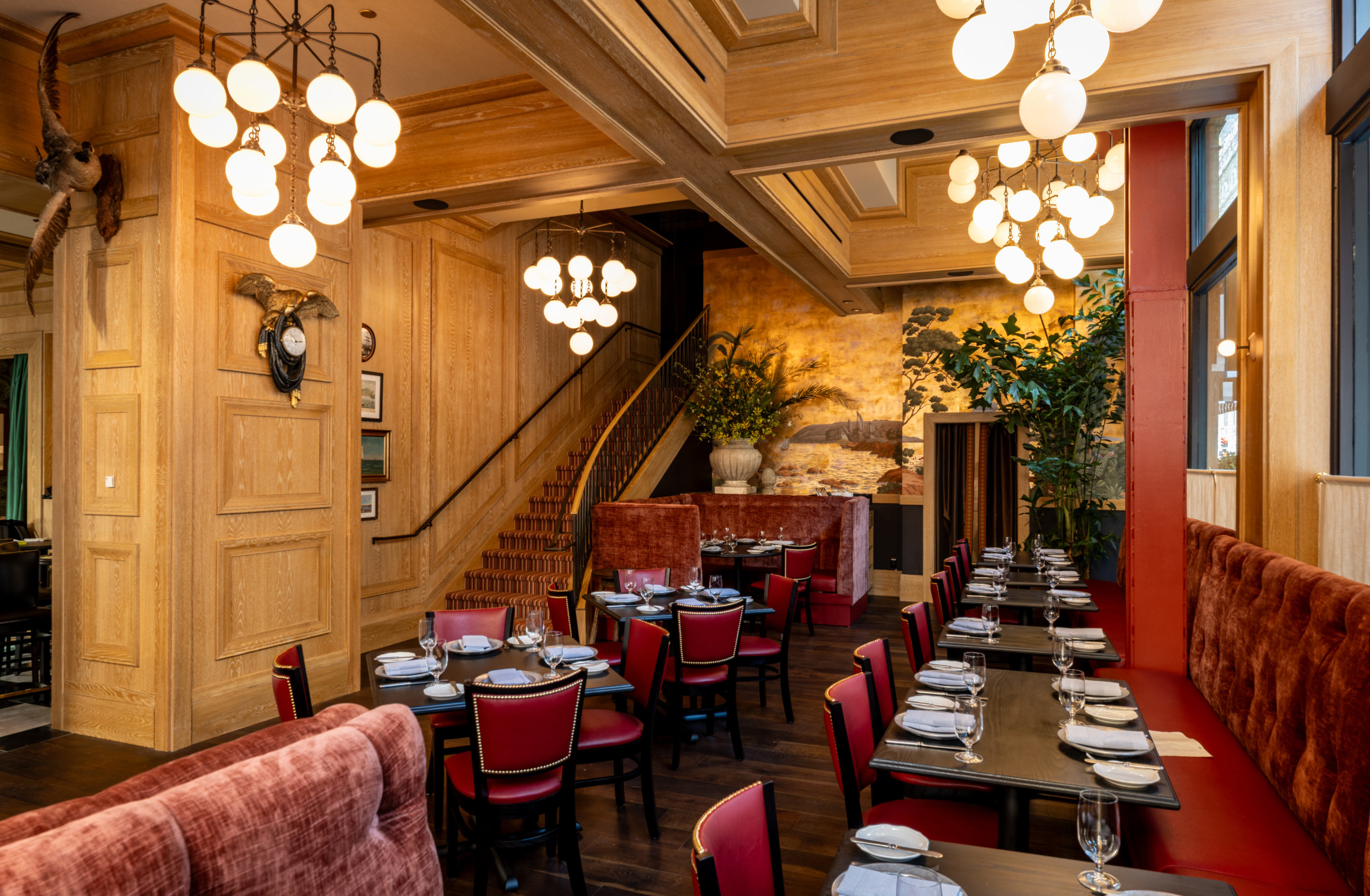
Restaurant operators are asking the right questions: "What will an AI phone answering service actually cost my location?" and "How do I calculate the real ROI?" The answers aren't as straightforward as a monthly subscription fee. Between labor savings, missed call recovery, and upsell opportunities, the true cost equation involves multiple variables that can make or break your budget planning.
AI phone answering services have evolved far beyond simple voicemail systems. Companies like Hostie AI are now handling complex conversations, managing reservations, and even processing takeout orders with human-like interactions (Hostie AI Features). The technology has reached a point where guests often don't realize they're speaking with an AI assistant (When You Call a Restaurant).
This comprehensive cost calculator will walk you through every pricing model, hidden expense, and revenue opportunity so you can make an informed decision for your restaurant. We'll break down real-world case studies, including a documented 760% ROI scenario, and provide actionable worksheets to calculate your specific situation.
Most AI phone answering services follow a Software-as-a-Service model with monthly or annual subscriptions. The typical range spans from $99 to $599 per location per month, depending on features and call volume limits.
Basic Tier ($99-199/month):
Professional Tier ($200-399/month):
Enterprise Tier ($400-599/month):
Some providers charge based on actual usage, typically ranging from $0.15 to $1.00 per minute of conversation time. OpenAI's Realtime API, for example, costs approximately $1 per minute based on real-world testing (OpenAI Realtime API Cost Breakdown).
Per-Minute Cost Breakdown:
Many providers combine base subscription fees with usage overages, offering predictable monthly costs while accommodating seasonal fluctuations.
Example Hybrid Model:
| Cost Category | Low End | High End | Notes |
|---|---|---|---|
| Initial setup fee | $0 | $2,500 | Some providers like Newo.ai offer one-click setup |
| Menu integration | $200 | $1,000 | Feeding restaurant menu and policies to AI |
| POS integration | $500 | $3,000 | Connecting to existing reservation systems |
| Staff training | $100 | $500 | Teaching team to work alongside AI |
| Total Setup | $800 | $7,000 | One-time investment |
Direct Service Costs:
Hidden Costs to Consider:
The most significant cost benefit comes from labor savings. A dedicated phone host typically costs restaurants $45,724 annually, including salary and training costs (760% Annual ROI with Voice AI).
Annual Labor Cost Breakdown:
AI Service Annual Cost:
This calculation assumes the AI handles 80% of routine calls, allowing human staff to focus on high-value interactions (Forbes: How AI is Transforming Restaurants).
Restaurants typically miss 20-30% of incoming calls during peak hours. AI systems can capture up to 30% of these missed opportunities (760% Annual ROI with Voice AI).
Missed Call Revenue Calculator:
AI systems can consistently suggest appetizers, desserts, or wine pairings without the fatigue or forgetfulness that affects human staff. Early implementations show AI hosts generating an additional $3,000 to $18,000 per month per location (Introducing Hostie).
Conservative Upsell Calculation:
AI systems can take bookings when restaurants are closed or during peak hours when human hosts are unavailable (When You Call a Restaurant). This extends your booking window significantly.
After-Hours Booking Value:
SoundHound documented a restaurant achieving 760% annual ROI through voice AI implementation. The breakdown shows how a $5,998 annual investment generated $45,724 in labor savings plus additional revenue from captured calls (760% Annual ROI with Voice AI).
Bodega (Vietnamese Restaurant, Bay Area):
Using Hostie AI since 2024, this high-end restaurant seamlessly handles reservation inquiries and menu questions (When You Call a Restaurant).
RestoHost Network:
Now answering calls at 150 restaurants in the Atlanta metro area, demonstrating scalable implementation across diverse restaurant types (When You Call a Restaurant).
Beach Hotel Tasmania:
Took 200+ bookings in under 30 days with their AI assistant "Sadie," showing rapid adoption and immediate results (Beach Hotel Burnie Success).
Wendy's Expansion:
Plans to deploy AI drive-thru systems to over 500 restaurants by end of 2025, with Fresh AI technology already in 160+ locations (Wendy's AI Deployment).
Dine Brands (Applebee's & IHOP):
Testing Voice AI Agents to handle phone orders, aiming to streamline operations and reduce staff stress (Applebee's and IHOP AI Implementation).
Labor Costs:
Opportunity Costs:
Implementation:
Monthly Operations:
Recovered Revenue:
Net Annual Benefit:
Total Annual Investment:
ROI Percentage:
Recommended Solution: Basic to Professional tier
Monthly Cost Range: $150-300
Key Features Needed:
ROI Drivers:
Recommended Solution: Professional tier
Monthly Cost Range: $250-450
Key Features Needed:
ROI Drivers:
Recommended Solution: Professional to Enterprise tier
Monthly Cost Range: $350-600
Key Features Needed:
ROI Drivers:
AI systems offer distinct advantages with multilingual capabilities, enabling smoother communication with diverse clientele and enhancing the overall customer experience (Forbes: How AI is Transforming Restaurants).
Many AI solutions require upfront licensing fees and additional investment in IT resources for integration (AI Customer Service Cost Insights). Factor in:
Restaurants experience varying call volumes throughout the year. Consider:
Peak Season Adjustments:
Off-Season Optimization:
While AI handles routine calls effectively, human oversight remains important:
Most restaurants reach break-even within 2-4 months of implementation. The key factors accelerating payback include:
Start Small:
Gradual Implementation:
Vendor Selection Criteria:
Companies like Newo.ai allow restaurants to create their AI host in one click within minutes, with implementation possible in under an hour (When You Call a Restaurant).
AI phone systems continue advancing rapidly. ConverseNow handles over 2,000,000 conversations per month and repurposes over 83,000 labor hours monthly (ConverseNow Voice AI), demonstrating the scale potential.
Early Adopter Benefits:
Long-term Value Creation:
By managing routine tasks, AI allows human hosts to focus on high-touch interactions, enhancing guest experiences and job satisfaction (Forbes: How AI is Transforming Restaurants).
The true cost of an AI phone answering service extends far beyond monthly subscription fees. When properly calculated, including labor savings, revenue recovery, and operational improvements, most restaurants see positive ROI within the first quarter.
Key Takeaways:
Restaurants field a high volume of phone calls from inquisitive tourists or diners running late (When You Call a Restaurant). AI systems can handle these routine inquiries while your staff focuses on creating memorable dining experiences.
Recommended Action Plan:
The restaurant industry is experiencing a significant transformation as artificial intelligence makes inroads into front-of-house operations (Forbes: How AI is Transforming Restaurants). Early adopters are already seeing substantial returns, with AI hosts generating up to 25 times their cost in additional revenue (Introducing Hostie).
The question isn't whether AI phone answering services provide value—it's whether you can afford to wait while your competitors gain the operational and financial advantages they offer.
AI phone answering services typically range from $5,998 annually for premium solutions to around $1 per minute for real-time API usage. However, the true cost includes integration fees, training, and ongoing maintenance. Most restaurant operators see a 760% annual ROI by reducing labor costs (estimated at $45,724 annually per location) and capturing up to 30% of previously missed calls.
Voice AI systems can repurpose significant labor hours - ConverseNow alone handles over 2 million conversations monthly and saves over 83,000 labor hours. With average restaurant labor costs of $45,724 annually including salary and training, AI phone systems can reduce staffing needs while maintaining 24/7 availability and consistent service quality.
Leading voice AI providers report up to 760% annual ROI for restaurants implementing phone ordering systems. This comes from capturing missed calls (up to 30% recovery rate), reducing labor costs, increasing order accuracy, and enabling upselling opportunities. Major chains like Wendy's, Applebee's, and IHOP are rapidly deploying these systems across hundreds of locations.
Modern AI phone systems like TORI integrate directly with Point of Sale (POS) systems, Kitchen Display Systems (KDS), headsets, and speaker posts. This seamless integration eliminates wait times and ensures accurate order processing. The systems are designed to work with existing restaurant infrastructure without requiring major technology overhauls.
Yes, AI phone systems are transforming restaurants of all sizes by handling high call volumes during peak hours and reducing staff stress. As Forbes reports on AI transformation in restaurants, even smaller venues like Beach Hotel in Tasmania saw 200+ bookings in 30 days with AI implementation. The technology pays for itself through improved efficiency and captured revenue from previously missed calls.
Key cost factors include upfront licensing fees, integration costs with existing systems, ongoing maintenance, and staff training. However, restaurants must also calculate savings from reduced labor needs, increased order accuracy, 24/7 availability, and revenue recovery from missed calls. The total cost of ownership often shows positive ROI within the first year of implementation.
RELATED


